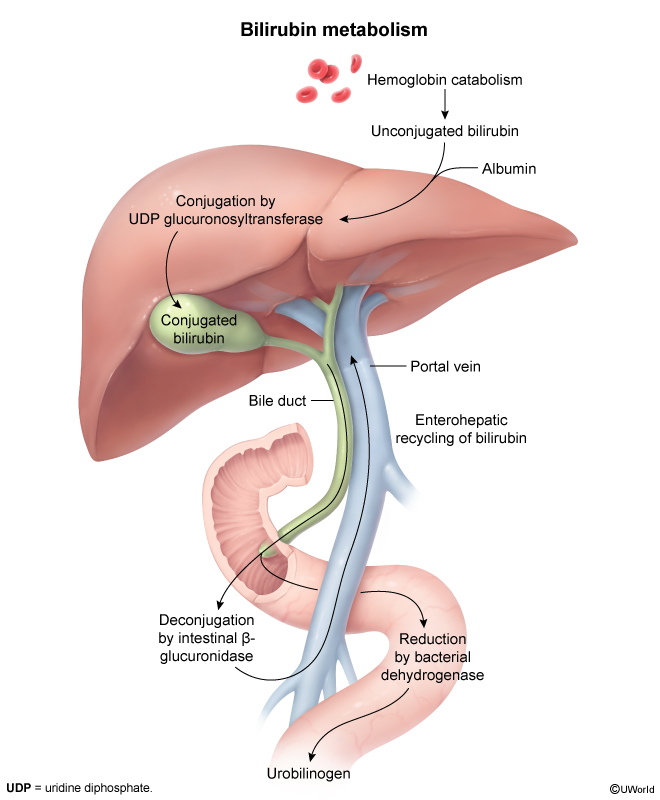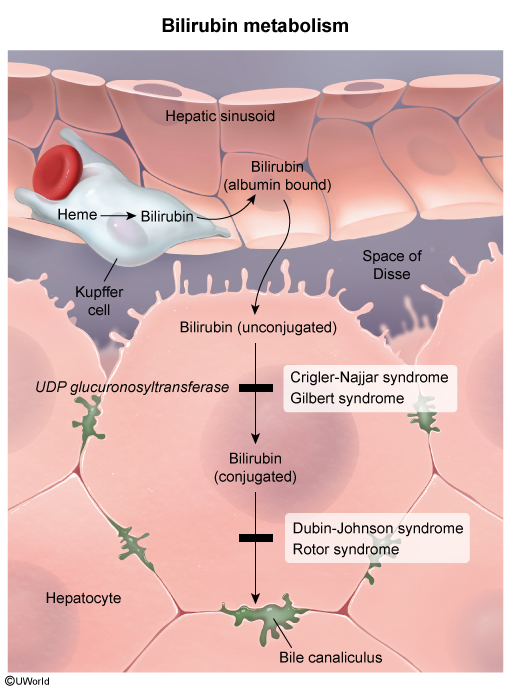Hereditary Hyperbilirubinemias
Article Sections
Introduction
Hereditary hyperbilirubinemias are a group of rare genetic disorders characterized by impaired bilirubin metabolism, leading to elevated serum bilirubin. They are classified based on the predominant type of bilirubin elevated (ie, unconjugated vs conjugated) and the underlying enzymatic defect.
Pathogenesis and clinical presentation
Bilirubin is a product of heme catabolism that functions as an antioxidant but can be toxic in excess. It is metabolized by the liver and excreted by the kidneys and intestines, as follows:
- Bilirubin metabolism: Bilirubin is insoluble and binds albumin for transport to the liver, where it is conjugated to glucuronic acid by the enzyme UDP glucuronyltransferase, making it water-soluble (Figure 1). Conjugated bilirubin is transported into the biliary tract and secreted into the small intestine as bile.
- Bilirubin excretion
Continue Learning with UWorld
Get the full Hereditary Hyperbilirubinemias article plus rich visuals, real-world cases, and in-depth insights from medical experts, all available through the UWorld Medical Library.
Figures

Figure 1

Figure 2
Tables
Table 1